
-
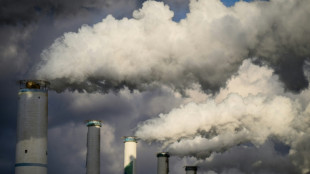 South Korea pledges to phase out coal plants at COP30
South Korea pledges to phase out coal plants at COP30
-
Ex-PSG footballer Hamraoui claims 3.5m euros damages against club

-
 Mbappe, PSG in counterclaims worth hundreds of millions
Mbappe, PSG in counterclaims worth hundreds of millions
-
Two newly discovered Bach organ works unveiled in Germany

-
 Stocks lower on uncertainty over earnings, tech rally, US rates
Stocks lower on uncertainty over earnings, tech rally, US rates
-
Barca to make long-awaited Camp Nou return on November 22
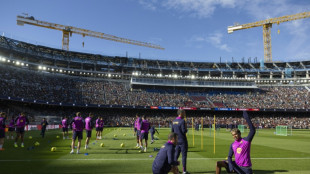
-
 COP30 talks enter homestretch with UN warning against 'stonewalling'
COP30 talks enter homestretch with UN warning against 'stonewalling'
-
France makes 'historic' accord to sell Ukraine 100 warplanes

-
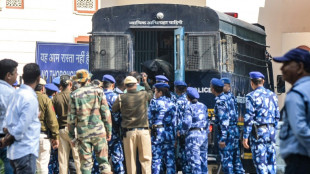 Delhi car bombing accused appears in Indian court, another suspect held
Delhi car bombing accused appears in Indian court, another suspect held
-
Emirates orders 65 more Boeing 777X planes despite delays

-
 Ex-champion Joshua to fight YouTube star Jake Paul
Ex-champion Joshua to fight YouTube star Jake Paul
-
Bangladesh court sentences ex-PM to be hanged for crimes against humanity

-
 Trade tensions force EU to cut 2026 eurozone growth forecast
Trade tensions force EU to cut 2026 eurozone growth forecast
-
'Killed without knowing why': Sudanese exiles relive Darfur's past

-
 Stocks lower on uncertainty over tech rally, US rates
Stocks lower on uncertainty over tech rally, US rates
-
Death toll from Indonesia landslides rises to 18
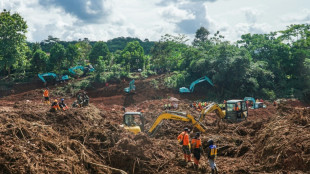
-
 Macron, Zelensky sign accord for Ukraine to buy French fighter jets
Macron, Zelensky sign accord for Ukraine to buy French fighter jets
-
India Delhi car bomb accused appears in court
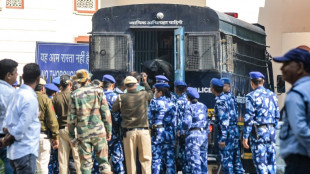
-
 Bangladesh ex-PM sentenced to be hanged for crimes against humanity
Bangladesh ex-PM sentenced to be hanged for crimes against humanity
-
Leftist, far-right candidates advance to Chilean presidential run-off

-
 Bangladesh's Hasina: from PM to crimes against humanity convict
Bangladesh's Hasina: from PM to crimes against humanity convict
-
Rugby chiefs unveil 'watershed' Nations Championship

-
 EU predicts less eurozone 2026 growth due to trade tensions
EU predicts less eurozone 2026 growth due to trade tensions
-
Swiss growth suffered from US tariffs in Q3: data

-
 Bangladesh ex-PM sentenced to death for crimes against humanity
Bangladesh ex-PM sentenced to death for crimes against humanity
-
Singapore jails 'attention seeking' Australian over Ariana Grande incident

-
 Tom Cruise receives honorary Oscar for illustrious career
Tom Cruise receives honorary Oscar for illustrious career
-
Fury in China over Japan PM's Taiwan comments

-
 Carbon capture promoters turn up in numbers at COP30: NGO
Carbon capture promoters turn up in numbers at COP30: NGO
-
Japan-China spat over Taiwan comments sinks tourism stocks

-
 No Wemby, no Castle, no problem as NBA Spurs rip Kings
No Wemby, no Castle, no problem as NBA Spurs rip Kings
-
In reversal, Trump supports House vote to release Epstein files

-
 Gauff-led holders USA to face Spain, Argentina at United Cup
Gauff-led holders USA to face Spain, Argentina at United Cup
-
Ecuador voters reject return of US military bases

-
 Bodyline and Bradman to Botham and Stokes: five great Ashes series
Bodyline and Bradman to Botham and Stokes: five great Ashes series
-
Iran girls kick down social barriers with karate

-
 Asian markets struggle as fears build over tech rally, US rates
Asian markets struggle as fears build over tech rally, US rates
-
Australia's 'Dad's Army' ready to show experience counts in Ashes

-
 UN Security Council set to vote on international force for Gaza
UN Security Council set to vote on international force for Gaza
-
Japan-China spat sinks tourism stocks

-
 Ecuador voters set to reject return of US military bases
Ecuador voters set to reject return of US military bases
-
Trump signals possible US talks with Venezuela's Maduro

-
 Australian Paralympics gold medallist Greco dies aged 28
Australian Paralympics gold medallist Greco dies aged 28
-
Leftist, far-right candidates go through to Chilean presidential run-off

-
 Zelensky in Paris to seek air defence help for Ukraine
Zelensky in Paris to seek air defence help for Ukraine
-
Bangladesh verdict due in ex-PM's crimes against humanity trial

-
 A pragmatic communist and a far-right leader: Chile's presidential finalists
A pragmatic communist and a far-right leader: Chile's presidential finalists
-
England ready for World Cup after perfect campaign

-
 Cervical cancer vaccine push has saved 1.4 million lives: Gavi
Cervical cancer vaccine push has saved 1.4 million lives: Gavi
-
Graid Technology Finalizes Intel VROC Licensing Agreement, Expanding Leadership in Enterprise Storage Solutions

| RBGPF | 0.46% | 76 | $ | |
| CMSC | -0.21% | 23.849 | $ | |
| BCC | -0.66% | 68.585 | $ | |
| JRI | -0.74% | 13.55 | $ | |
| SCS | -0.48% | 15.625 | $ | |
| NGG | 0.72% | 77.94 | $ | |
| GSK | 1.39% | 47.845 | $ | |
| RIO | 0.83% | 71.22 | $ | |
| BTI | 1.29% | 54.84 | $ | |
| AZN | 0.69% | 89.72 | $ | |
| RYCEF | -1.04% | 14.4 | $ | |
| RELX | -1.3% | 40.8 | $ | |
| BCE | -0.48% | 22.72 | $ | |
| CMSD | -0.42% | 23.89 | $ | |
| BP | 0.64% | 36.765 | $ | |
| VOD | -0.12% | 12.305 | $ |

Brazil's Porto Alegre: a flood disaster waiting to happen
Porto Alegre, the Brazilian metropolis left submerged after torrential rains, had been lulled into a "false sense" of security by a vast but aging system of flood defenses, an urban drainage engineer told AFP.
Leomar Teichmann said a network of dikes, levees and a massive wall was meant to protect about 40 percent of the capital city of Rio Grande do Sul state in southern Brazil, where 150 people have died and hundreds of thousands were forced from their homes.
Teichmann is an engineering consultant and former deputy director of water and sewerage services for Porto Alegre, a city of 1.4 million people on the banks of the Guaiba estuary.
He told AFP he had already warned in 2019 that the city was at risk.
- What does system consist of? -
"The system was designed after floods in 1967 and built in the 1970s. It includes about 65 kilometers (40 miles) of dykes and a concrete wall of 2.67 km, as well as 14 floodgates and 22 storm water pumping stations.
"It was a simple system that seemed functional, since it guaranteed the protection of the urbanized part of Porto Alegre.
"However, it was never tested in practice until November 2023, because it was only on this occasion that the level of the Jacui River exceeded three meters (10 feet), which is the level of the Maua wall," leading to flooding, he explained.
"In other words, the system stood for 51 years without the water of the Jacui River ever touching the wall."
- Why did it fail with latest floods? -
"Gate Number 14 buckled under the great pressure of the water and began to leak with great volume and speed.
"The amount of water was so great that the nearby pumping stations were quickly flooded, causing the pumps to shut down.
"The flooding caused by the gate failure was so rapid that the entire region was flooded in a few hours.
"This flood eventually caused a power outage in the flooded areas, and as a result, all the pumping stations north of the Gasometer Plant stopped working," he said, referring to an out-of-service power plant.
"There were several failures in sequence. In about 24 hours, the water level on either side of the system was exactly the same."
- What were consequences of these failures? -
"Already in 2019, I stated that the protection system installed in Porto Alegre gave the population a false sense of protection and security, because there was no way to contain water in case of failure of any of the elements that make up this system.
"It is an old system, with many points subject to failure and requiring high investments in operation and maintenance.
"Much is said about Porto Alegre, but this same type of flood protection system was built in Canoas, Sao Leopoldo and Novo Hamburgo (other municipalities in the state) where the system was also overwhelmed by the water level.
"In all these cities the water very quickly invaded areas that should have been protected and caused greater tragedies than if the system did not exist."
Teichmann explained that water spilling over the dikes moved much faster than rising river levels.
"I'm not saying that dikes are useless, but with a flood of this size, as soon as the dikes were overcome by water, the speed with which water passed to the other side of these was much higher than if the dikes did not exist."
Y.Zaher--SF-PST



